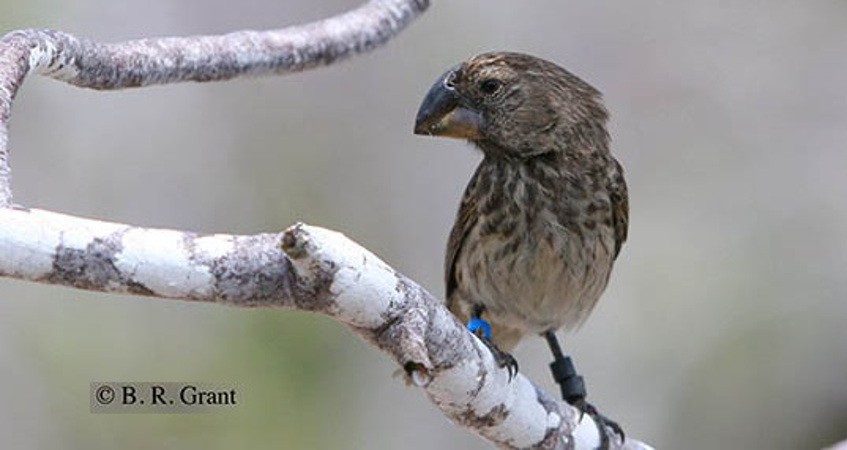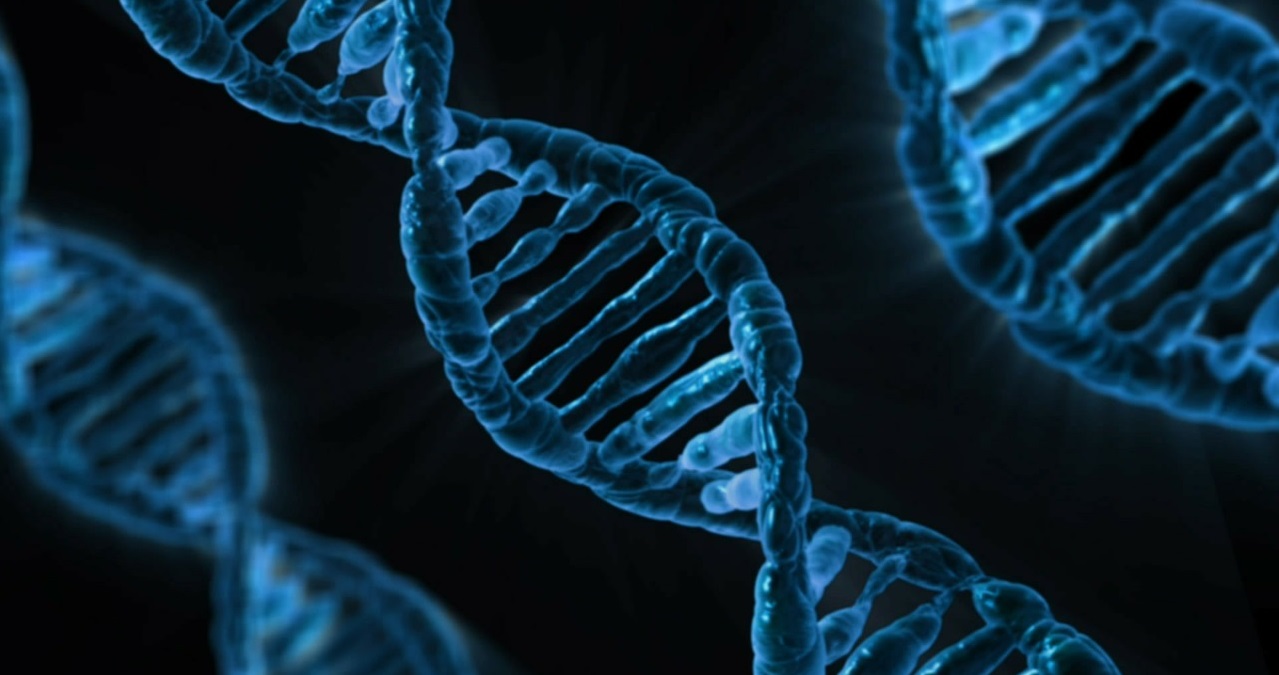Lamarck and Darwin: two divergent visions of the living world
PDF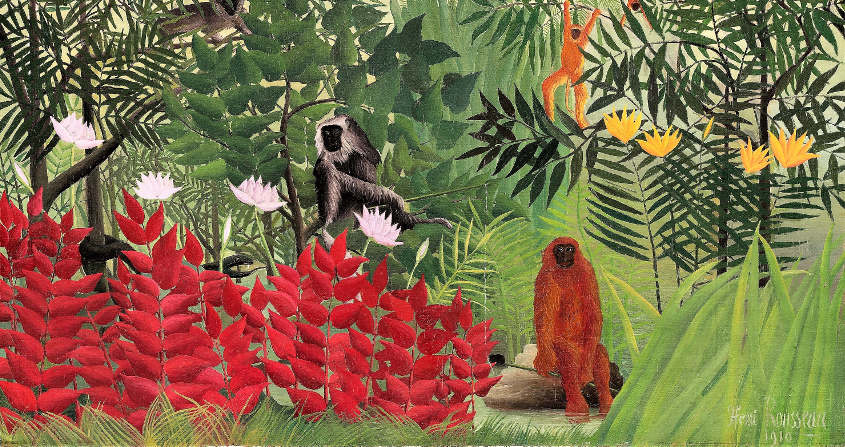
The last two decades have seen an accumulation of scientific data on so-called epigenetic phenomena, changes in the expression of genes induced by the environment and transmitted temporarily to the offspring. This has led some authors to make the connection with Lamarckism, some even go so far as to propose the elaboration of a new synthetic theory of evolution combining the theories of Lamarck and Darwin. A comparison of the basic principles of these two theories shows that their visions of the living world are too divergent to be reconcilable. This does not detract from the fact that research on epigenetic phenomena will certainly lead to an enrichment of Darwinian theory.
1. Conflicts and confusion between Lamarckism and Darwinism
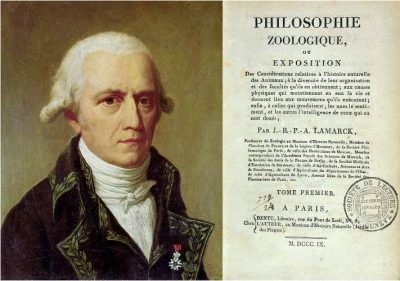
Fifty years later, in England, The Origin of Species was published in which Charles Darwin (1809-1882) developed his own theory on the transformation of species by “descent with modification” (Figure 2) (see focus Darwin).
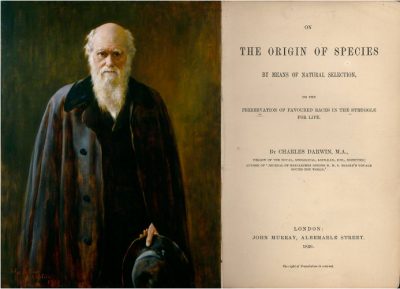
This is not the case, these two theories are still the subject of conflicts and confusion. For the general public, evolution – when it is accepted, which is far from always being the case [1] – is generally understood in a Lamarckian way. That is, evolutionary changes occur under the more or less direct influence of the environment. The Darwinian process, which implies that fortuitous genetic variations may be the basis for significant biological transformations (see below), strikes common sense.
Surprisingly enough, these conflicts and confusions are also found among biologists, philosophers and science historians. Conflicts that are often linked to a deep rejection of Darwinism, for non-scientific motivations (seeTheory of Evolution: misunderstandings and resistance). Confusions that are due to misunderstandings or difficulties of interpretation. This is particularly the case with some of Lamarck’s writings on the appearance of life, which are ambiguous, if not contradictory [2].
This situation has been accentuated over the past two decades with the importance acquired by the epigenetic imprints of the genome, which is discussed in several articles in this encyclopedia (see Adaptation: Responding to environmental challenges; Epigenetics, the genome and its environment; The adaptation of organisms to their environment). Very briefly, these imprints involve chemical changes in DNA (or the proteins surrounding it), but do not change the sequence of nucleobases (so they are not mutations) and are reversible. They are usually triggered by stressful situations and influence gene expression, often in an adaptive sense. They can be transmitted to offspring for a few generations, referred to as epigenetic memory or transgenerational effect. This type of phenomenon, known for a long time, has been the subject of renewed studies since the beginning of the century (see Epigenetics, the genome and its environment).
This transgenerational effect, although transitory, may recall the heredity of the acquired traits discussed later. A phenomenon that is often, and wrongly, considered to be the main characteristic of Lamarck’s theory. This has led biologists to re-launch the debate on a possible update of this one. Some even go so far as to mention the need for a synthesis between the two theories. We will see that the considerable differences between them do not argue in favour of such an idea.
This subject will be treated here from the strict biological point of view, by comparing the basic principles of these theories and the visions of the living world that flow from them, particularly on the origin of life and on the mechanisms of transformation of species. An article by Laurent Loison and Francesca Merlin, which addresses this problem from the perspective of the history and philosophy of science, can also be found in the Encyclopaedia Universalis [3].
2. The origin of living beings and their genealogical relationship
In Lamarck’s vision, the “simplest” or “most imperfect” organisms always appear as “spontaneous generation” or “direct generation”. He writes in Zoological Philosophy: “In its march, nature began, and continues to do so every day [underlined by the author of this article] by forming the simplest organized bodies and it only forms directly those, that is to say, these first drafts of the organization, which have been designated by the expression of spontaneous generations“.
It should be noted in passing that in the light of our current knowledge on the extraordinary complexity of the most elementary living cells and on the origin of life, this idea of permanent spontaneous generation makes people smile. As well as the qualifier “simple” for living organisms (Read the articles The Origin of Life as seen by a geologist who loves astronomy; Once upon a time there was life… and Origin of the first cells: the engineer’s point of view).
Lamarck imagines that these primitive organisms gradually become more complex over the course of geological time to reach all existing living beings. A complexity that is synonymous for him with perfection and which would result from an inherent property of the living beings to which we will return later.
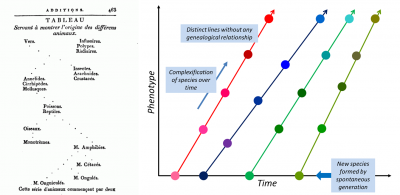
Lamarck also postulates that primitive plants and animals appear in two independent ways. It also allowed two separate routes for animals. One is relatively short, starting with what were then called “infusoria” (unicellular microorganisms) and the other is longer, starting with the simplest worms and leading to the vertebrates (Figure 3). In short, in Lamarckian theory, the living world would be composed of multiple successive and independent lines. There would be no single common ancestor.
Darwin, for his part, does not speak of the appearance of life in The Origin of Species, except to say that the knowledge of his time did not allow him to approach it. It is sometimes mentioned in his correspondence, notably in a letter from 1871 to his best friend Joseph Hooker. “It is often said that all the conditions for the first production of a living organism are present, which could ever have been present. But if (and oh! what a big if!) we could conceive in some warm little pond, with all sorts of ammonia and phosphoric salts, light, heat, electricity, etcetera present, that a protein compound was chemically formed, ready to undergo still more complex changes, at the present day such matter would be instantly devoured or absorbed, which would not have been the case before living creatures were formed.“.
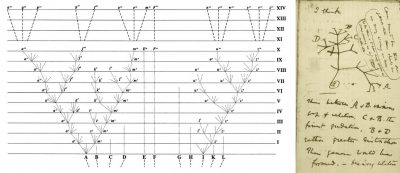
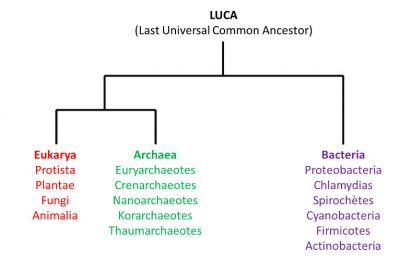
We can therefore see that from the outset, on the very origin of life, Lamarck and Darwin’s theories are based on two very different visions of the structure of the living world.
There are at least two other important differences between these theories. As they both concern the modalities of evolution, they are very intertwined; but for the sake of clarity we will present them separately.
3. The mechanisms of evolutionary transformations
We are entering into what is really the heart of the two theories. According to Lamarck, the variations of the individuals who are at the root of the transformation of species occur under the effect of external circumstances leading to “needs”, themselves at the origin of “actions” or “efforts”, which will create “habits”. Let us quote him: “The second conclusion is my own: it assumes that, by the influence of circumstances on habits, and then by the influence of habits on the condition of the parts of the animal, and even on that of the organization, each animal can receive in its parts and its organization, changes that can become very significant. ».
In the same Chapter VII of Zoological Philosophy it states a first law: “In any animal which has not gone beyond the end of its development, the more frequent and sustained use of any organ gradually strengthens, develops, enlarges (…) this organ; while the constant defect of such an organ, imperceptibly weakens and deteriorates it, gradually reduces its faculties and eventually makes it disappear“.
In plants, Lamarck is led to propose an even more direct influence of the environment on the organism because, of course, we cannot talk about efforts and habits in plants! In his theory, variations are therefore always induced, more or less directly, under the influence of external conditions.
Since the discovery of genetic mutations at the beginning of the 20th century, neolamarckians have had to integrate the idea that these mutations are at the root of variations. They then imagined that they had to be directed by the environment, on specific genes, to adapt the organism to its environment. But this idea is in contradiction with all the experimental research carried out since the 1940s. The most recent and one of the most demonstrative was published in 1997 by an American team [6]. We will come back to this later.
Based on these induced variations, the transformation of species would be driven by a trend towards increasing complexity, at least in animals. This trend would have the role of “driving” in the evolution. But where would this trend come from? It would be an immanent property of living beings that irreversibly pushes them towards ever greater complexity. It is therefore a law of nature that requires no explanation. It should be noted in passing that, in the same logic, Lamarck did not believe in the extinctions of species, except those destroyed by human actions. For him, species are transformed by becoming more complex but do not become extinct.
Lamarck, however, wanted to be very materialistic and often repeats that the living obey only physical laws. It can be admitted that the reference to the “Supreme Author of all things”, frequent in his writings, is a matter of political opportunism (Napoleon did not appreciate that the role of God was neglected!). Nevertheless, this push towards complexity, which according to him is the exclusive property of the living world, is a singular reminder of vitalismPhilosophical doctrine which establishes the existence of a vital principle distinct from both the thinking soul and the physico-chemical properties of the body, governing the phenomena of life (André Lalande’s definition)..
It should be noted that this trend towards complexity, as well as the influence of the environment on changes, both function as an anti-hasard. The share of randomness in the transformation of species is therefore limited in Lamarck. This is what seduces many people in his theory, including biologists and philosophers of science.
Darwin, for his part, strongly contests that external conditions are the cause of the variations. In the introduction to The Origin of Species, he writes: “Naturalists continually refer to external conditions, such as climate, food, etc., as the only possible cause of variation. In one very limited sense, as we shall hereafter see, this may be true; but it is preposterous to attribute to mere external conditions, the structure, for instance, of the woodpecker, with its feet, tail, beak, and tongue, so admirably adapted to catch insects under the bark of trees. ... ». He also refuses the idea of a force pushing for increasing complexity, which he finds “silly”.
In Darwinian theory, the main forces at play are “spontaneous and accidental” hereditary variations from which natural selection operates (see Figure 4; see Theory of Evolution: Misunderstandings and Resistance). It is the latter that plays the role of “engine” of evolution, accidental variations are only the basic “material”. Darwin writes: “I am convinced that Natural Selection has been the main but not exclusive means of modification“.
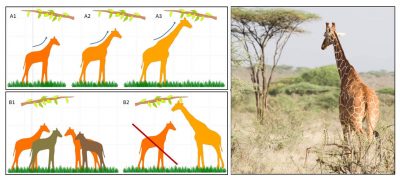
4. Transmission of changes to progeny
Let us return to the question already mentioned of the inheritance of acquired characteristics, an expression often associated with Lamarck, but which is in fact much later. This third point is much less different between the two theories than the previous ones, but still important with regard to the knowledge accumulated in genetics.
Under the pen of biologists or science historians, this inheritance of acquired characteristics is sometimes presented as an analogy between Lamarck and Darwin’s theories and sometimes as the only major difference between them. It is therefore difficult for non-specialists to find their way around. Let’s try to clarify.
First of all, let us recall that in both Lamarck’s and Darwin’s time, we knew nothing about the mechanisms of heredity [7]. So we had to try to understand why dogs don’t make cats…, among other things!
Since, in Lamarckism, variations occur under the influence of the environment, they are not, from the outset, hereditary (today we say: they are not genetic, but only phenotypic). However, for them to play a role in the transformation of species, they must absolutely be heritable, hence Lamarck’s second law: “Everything that nature has caused to be lost or acquired through the influence of circumstances in which their race has long been exposed (…) it retains by generation to new individuals from them, provided that the changes acquired are common to both sexes or to those who produced these new individuals“.
Thus the characters acquired under the influence of the environment would be transmitted to the progeny. This was not a hypothesis specific to Lamarck, he took up an idea considered in his time, and already since antiquity, as self-evident, but contradicted by the research carried out over the last century.
Darwin does not totally exclude that certain traits acquired under the direct influence of the environment may become heritable. He had even brought to light a very old hypothesis (the pangenesisHypothesis inspired by very old ideas and proposed by Darwin to explain heredity, but also reproduction and development. Very small particles (gemmules) would be produced by the different parts of the body and transmitted to the reproductive organs. Darwin himself considered it to be very speculative and provisional.), dating from Hippocrates (460-370 BC), to explain heredity in general and who could also explain this heredity of the acquired characters. But for him it could only be, at best, a secondary mechanism. Concerning pangenesis, he himself wrote that this hypothesis was very speculative and provisional. He considered that the only significant variations for the transformation of species are those that are heritable, those that are now called “genetic” (see The genome between stability and variability). He wrote, from the first chapter of The Origin of Species: “Any variation which is not inherited is unimportant for us“. A phrase that can be used by breeders and agronomists who create new breeds and varieties.
In short, the inheritance of acquired characteristics is absolutely necessary to Lamarck’s theory. From Darwinian perspective, it is not an integral part of the theory, although Darwin does not exclude it completely in some cases.
5. The multiple resistances to Darwinism
This brief overview of the essential differences between the two theories shows that they are based on visions of the living world that are difficult to reconcile (see Table). To speak of a new synthesis between Darwinism and Lamarckism based on epigenetic phenomena is therefore irrelevant and can only be a source of confusion. Nevertheless, these phenomena will certainly lead to the enrichment of synthetic theory, as discussed in another article on this site (see The adaptation of organisms to their environment), but it is still too early to say more.
Table. Some major differences between Lamarck’s and Darwin’s ideas
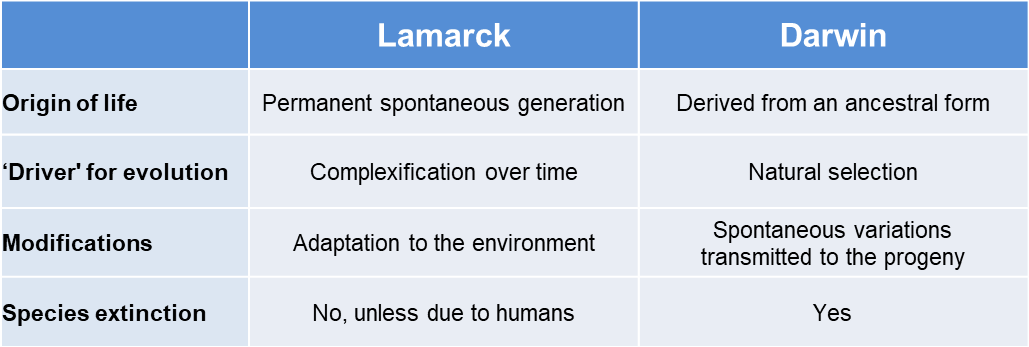
But here we need to broaden the debate on this propensity to challenge the basic mechanisms of Darwinian theory. It is nothing new, it is a recurrent phenomenon since the publication of The Origin of Species in 1859, relaunched after the development of synthetic theory in the 1940s. As soon as new experimental facts seem to disagree with this theory, journalists, but also scientists, seize the opportunity to question it, even when the authors of these works recognize themselves in the Darwinian current.
Two recent examples are very emblematic of this trend. The first concerns the work of a Japanese researcher, Motoo Kimura, published from 1968 onwards. He published a summary of his work in 1983 in a book entitled The neutral theory of molecular evolution, which was published in 1990 [8]. In short, Kimura emphasizes that many of the DNA mutations revealed by biochemical techniques must be neutral with regards to natural selection. At the time, journalists and biologists (who had obviously not read his texts) used it against neodarwinism on the theme: “all mutations are neutral so natural selection plays no role in evolution”. It was the central pillar of Darwinian theory that was targeted.
Kimura issued very strong denials because he never wrote that all mutations were neutral. His work is not at all outside Darwinian theory; a whole chapter of his book is devoted to natural selection. Its conclusions are now widely accepted by evolutionists and population geneticists (see Genetic Polymorphism and Selection).
The second example is more recent and even more edifying. It is based on the 1987 experiments on the colibacillus carried out by a famous American geneticist, John Cairns. He used a strain carrying a defective gene responsible for a nutritional sugar deficiency, a deficiency that prevents bacteria from reproducing but does not kill them. He observes that the rate of reverse mutations (gene that has become functional again) is much higher under deficiency conditions than under normal conditions. It was then legitimate to wonder whether this abnormal rate of reversion would not be due to mutations directed by the medium, targeted precisely on the defective gene to make it functional again. Many laboratories have tackled the problem and a high-level scientific controversy has been ongoing for 10 years.
It was decided in 1997 by the remarkable experiences of Susan M. Rosenberg’s team, already mentioned above [6]. This team demonstrated that the rapidity of onset of reverse mutations was due to the induction, by the deficiency situation, of an unusually high mutagenesis rate; but it operated throughout the genome, without any targeting of the defective gene. A result that is in line with neodarwinism. This increase in the mutation rate, triggered by stress conditions, is also discussed in another article on this site, about the “SOS response” (see The genome between stability and variability).
What is particularly significant is that during the first years of the controversy, articles of extreme virulence against neodarwinism, described among other things as “an absurd theory from which we would finally be rid“, were published in specialized scientific journals, which were considered serious.
We will note that the attacks provoked by these two types of work go to the very heart of the differences between Darwinism and Lamarckism: natural selection in the first case and the random nature of mutations in the second. It is difficult not to see in it a desire to return to Lamarckism. Some of the reactions to epigenetics may well be in the same vein.
Elements of explanation on this persistent craze for the Lamarckian vision have been mentioned in another article already mentioned (see Theory of Evolution: Misunderstandings and Resistance). On the one hand, Lamarck’s role in adaptation through effort is more in line with common sense and social morality, and therefore easier to accept. As for the immanent tendency towards the living to become ever more complex, it may suggest a certain spiritualism (reinforced by Lamarck’s frequent reference to “the Supreme Author of all things“), which may reassure those who are unhappy with Darwinian materialism. Feelings rarely go hand in hand with science.
References and notes
Cover image. A tropical forest with monkeys and snakes (Henri Rousseau, 1910). [National Gallery of Art, Washington, USA, Public Domain]
[1] “Les Pieds dans le plat” website; http://www.lespiedsdansleplat.me/la-montee-en-puissance-des-ideologies-creationnistes/
[2] Pietro Corsi, Jean Gayon, Gabriel Gohau & Stéphane Tirard (2006) Lamarck, philosopher of nature, Ed. PUF
[3] Laurent Loison & Francesca Merlin, “Épigénétique et Théorie de l’Évolution”, Encyclopædia Universalis [online], accessed 22 September 2017. URL: http://www.universalis.fr/encyclopedie/epigenetique-et-theorie-de-l-evolution/
[4] Spontaneous generation is an Aristotelian notion that implies the appearance of living beings from inanimate matter, without ascendants. This idea was long part of common sense: it was believed that maggots were born from rotten meat. Challenged by scientists as early as the 17th century, it was not until the 19th century (when it also took the name “heterogeny”) that it was abandoned. On April 7, 1864, at a public conference in the “Grand amphitheatre” of the Sorbonne, Louis Pasteur presented the result of 6 years of research on the subject and refuted the spontaneous generation. The french Academy of Sciences will then officially declare that spontaneous generation does not exist.
[5] Website of the french Academy of Sciences; http://www.academie-sciences.fr/archivage_site/video/v160913.htm
[6] Torkelson J. et al (1997) Genome-wide hypermutation in a subpopulation of stationary-phase cells underlies recombination-dependent adaptive mutation. EMBO J. 16(11):3303-11.
[7] The work of the Czech monk and botanist Gregor Mendel (1822-1884), who first experimentally established the laws governing biological heredity, is contemporary with Darwin. However, the publication of Mendel’s work in 1866 went unnoticed at the time. It was only 35 years later, at the beginning of the 20th century, that the Dutchman Hugo de Vries, the German Carl Erich Correns and the Austrian Erich von Tschermak independently rediscovered the laws of heredity, and recognized in Mendel their discoverer. Before Mendel, genetics was much less advanced than physics was before Newton.
[8] Motoo Kimura (1990), Théorie neutraliste de l’évolution, Paris, Flammarion, (ISBN 2-082-11153-9).
The Encyclopedia of the Environment by the Association des Encyclopédies de l'Environnement et de l'Énergie (www.a3e.fr), contractually linked to the University of Grenoble Alpes and Grenoble INP, and sponsored by the French Academy of Sciences.
To cite this article: BREGLIANO Jean-Claude (May 27, 2019), Lamarck and Darwin: two divergent visions of the living world, Encyclopedia of the Environment, Accessed April 18, 2024 [online ISSN 2555-0950] url : https://www.encyclopedie-environnement.org/en/life/lamarck-and-darwin-two-divergent-visions-of-living-world/.
The articles in the Encyclopedia of the Environment are made available under the terms of the Creative Commons BY-NC-SA license, which authorizes reproduction subject to: citing the source, not making commercial use of them, sharing identical initial conditions, reproducing at each reuse or distribution the mention of this Creative Commons BY-NC-SA license.





